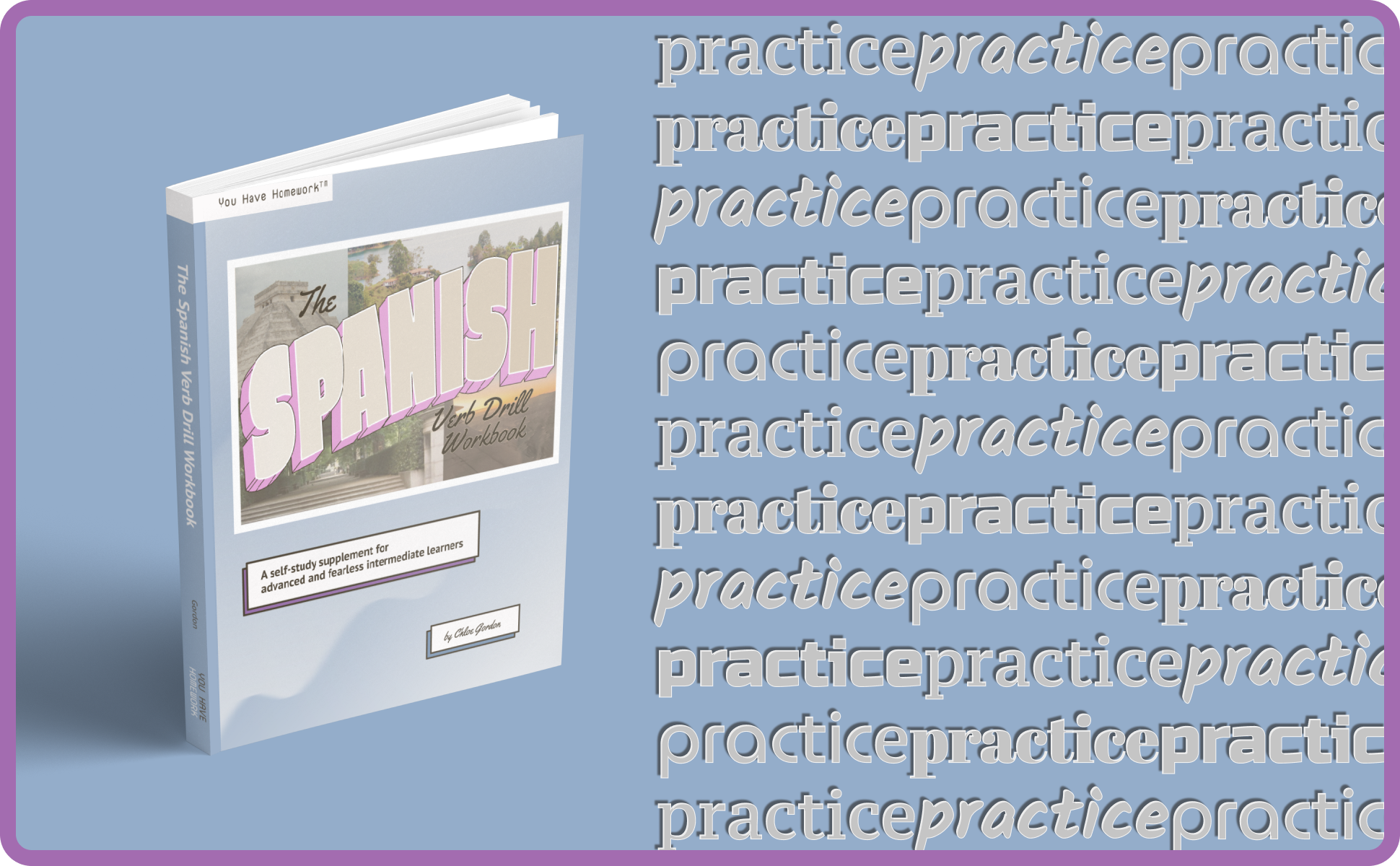All About My Book, The Spanish Verb Drill Workbook
Download a free sample!
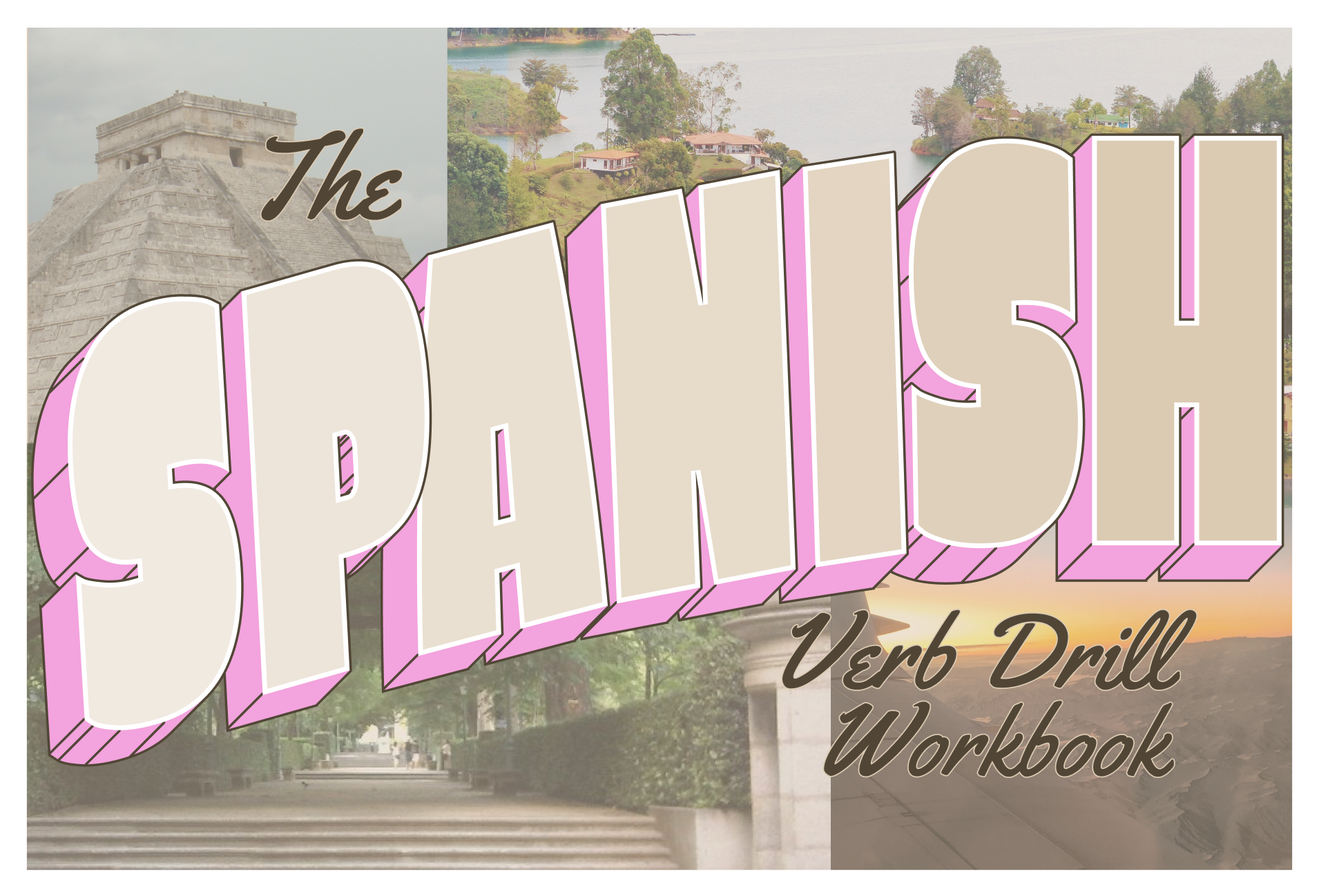
Which of the following game plans describe you?
- I’m a beginner and I plan to become as fluent in Spanish as Bad Bunny in 90 days by spending 15 mins a day on an app and watching Netflix, because Spanish is easy.
- I’m intermediate, but I need someone to tell me how to form sentences and an answer key to correct my work.
- I’m in an intermediate-advanced stage and after shedding many tears, I’ve finally come to terms with the fact I need to work much harder now to get to a higher level of speaking and understanding Spanish.
If the third one is where you’re at, keep reading.
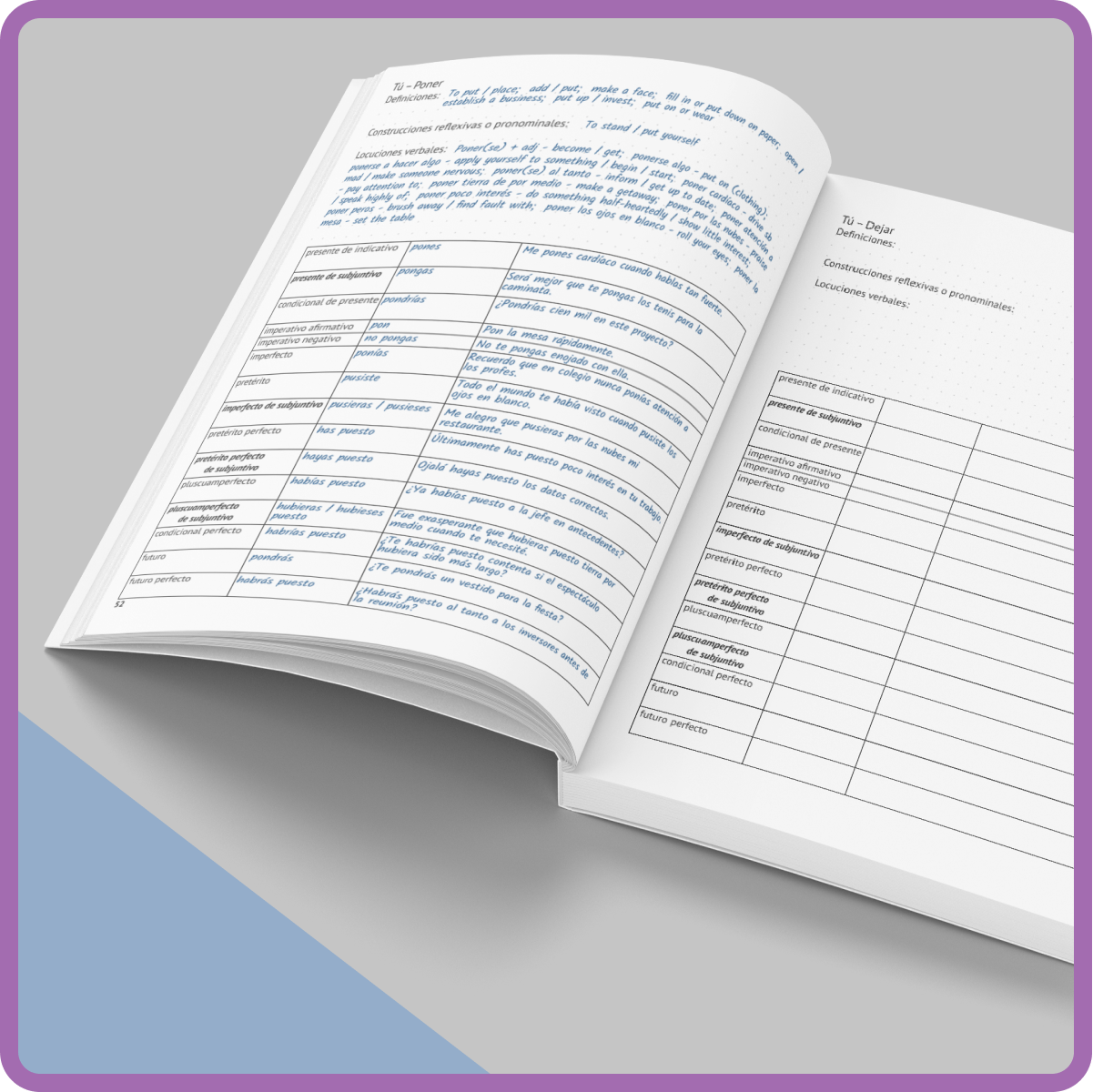
After many months of trials, hand-wringing, errors, testing, and corrections, I’ve finally released The Spanish Verb Drill Workbook: A self-study supplement for advanced and fearless intermediate learners. There was a bit of procrastination along the way too, but that’s normal when we have a long journey with a difficult thing that intimidates us.
(We’re not here to talk about doubts, but I want you to keep in mind the tough times can be conquered.)
This might be the most challenging Spanish workbook I’ve ever seen, and I hope customers will say the same thing. But what I want more than anything is for people to say, “I’ve finally gotten better!”
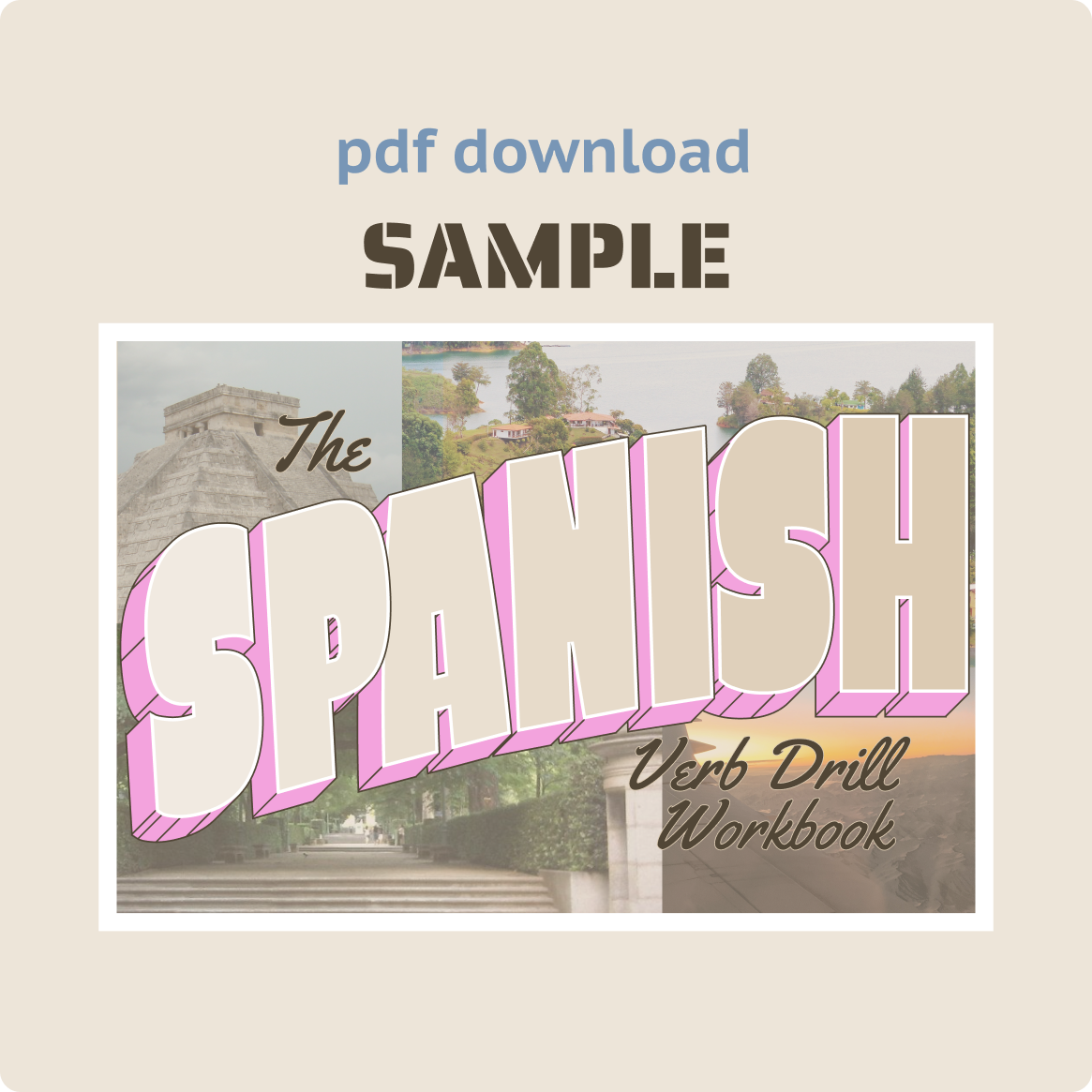
Joining as a member and downloading the sample is free - you just have to provide your email address.
Your work in a nutshell
- 201 pages of verb prompts
- 18 lined pages for guided notes
- 48 blank lined or verb pages
Each guided verb prompt page contains
- A verb
- One of the following subject pronouns: yo, tú, vos, él/ella/usted, nosotros, vosotros, ellos/ellas/ustedes
- Each of the following tenses/moods (except for vos): presente de indicativo, imperfecto, pretérito, pretérito perfecto, pluscuamperfecto, futuro, futuro perfecto, condicional de presente, condicional perfecto, presente de subjuntivo, imperfecto de subjuntivo, pretérito perfecto de subjuntivo, pluscuamperfecto de subjuntivo, imperativo (where appropriate)
It will be a lot of work, but that’s what you’re here for. It’s for people who are at the stage where they can look up verb conjugations and new words on their own and put all of it together in a sentence.
For those of you who’ve bought the book, here are some extra verbs that aren’t included, but would be useful to practice:
Ocurrir, convenir, arrepentirse, entregar, comprender, cerrar, desarrollar, and of course their related verb phrases.
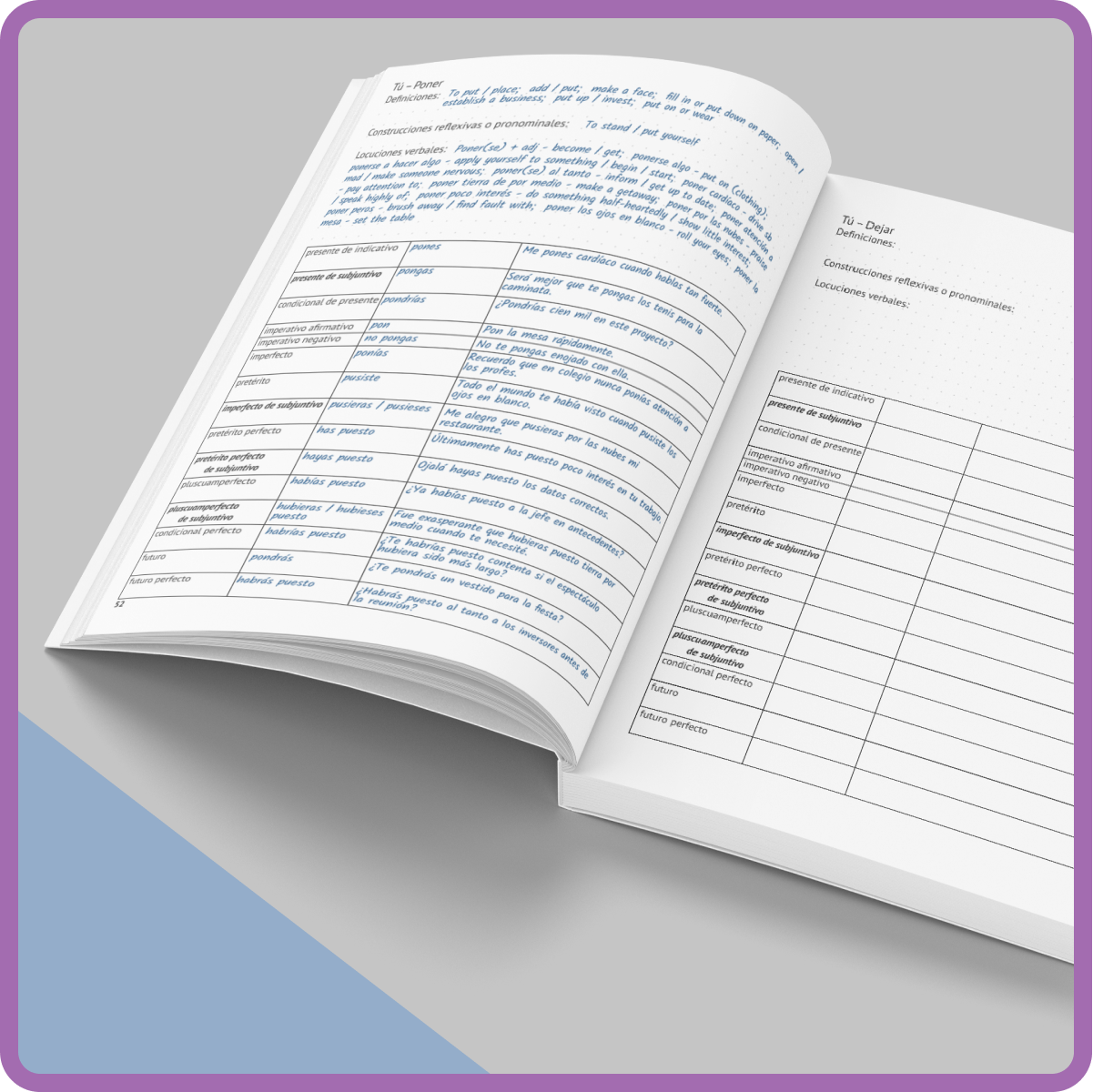
What caused me to do this?
I want to speak fluidly in Spanish, with fellow fascinating adults, about any subject. I want to understand the complicated things people are saying, and I want to be understood.
When I imagine my best possible life, I see myself having intimate conversations with stylish friends in Spanish, Japanese and French. But I couldn’t find tools that would get me there.
I’ve super struggled with learning Spanish, and I have the same story as many other people — took years of Spanish in high school and college and still couldn’t form coherent sentences. But two things I did have going for me is that I am determined and I have a background in product design. Meaning, I know how to deliver something useful that someone else needs.
The problem I’m solving
I will be honest with you — I am in no way a polyglot, and no one would say that I have a talent for learning languages. I’m still working toward my goal! However, I’ve made this my superpower behind creating this workbook, because I think there are a lot of people who are also “average” at learning a new language.
I only knew how to conjugate verbs the way I was taught: in a conjugation box. I had to unlearn thinking about verbs as stand-alone entities, and think about them as a way to express the action and timing behind a complex thought.
Another problem I had was that I didn’t have a full grasp on the subjunctive and more complicated past tense verbs. I knew how to conjugate the indicative forms — present, imperfect, preterite and kinda the conditional and future. The usage was pretty shaky, but I understood these generally well. Or so I thought.
When I discovered that the subjunctive is used A LOT, I realized how difficult Spanish is. That pretty much upended how I thought I knew how to express what I wanted to say correctly.
As a trained product designer, I made sure to do my research on what frustrates people with what’s on the market. A common thread I saw was that most lesson books focus on either Mexican Spanish or Castilian Spanish.
In this workbook you will be able to practice vos and vosotros, though I won’t show you how to conjugate them. So if you plan on taking your Spanish skills to Madrid, Buenos Aires, or Medellín, this book has got you covered.
Why do I want to do this?
There are a lot of resources for beginners, but I couldn’t find any that fit an intermediate–advanced learner’s needs. As much as I believed the promises given by YouTubers that learning a new language was easy, it was not for me and I absolutely couldn’t progress.
The only way I found to learn a difficult language was to do a lot of difficult work.
Saying this is probably the most unpopular method to get people to buy your product nowadays, but I know this workbook will reach the people who are willing to put in the effort to achieve their dream of speaking Spanish well. Not just getting by on a five-day vacation, but signing a legal document well.
Inspirations
I explained in the Introduction chapter of the book I was inspired by these two methods:
Deliberate Practice — Authors such as James Clear and Malcolm Gladwell have incorporated this method in their self-improvement books. Basically, you have to get into a groove where you hyperfocus on improvement. Instead of mindlessly repeating the same exercises daily, you have to get engaged with the process to reach a more difficult stage.
Draw A Box — In order to learn how to draw anything, you first have to draw 250 boxes. OK, that’s oversimplifying their program a bit, but the point is that you have to work on super basic drills (working on mark making, perspective, etc.) and then get feedback from a trained coach. This is quite similar to Deliberate Practice, but designed by someone who struggled with illustration and cracked the code to success.
Think of my book as a guided practice. You will be prompted to write a full sentence, given a pronoun, verb, and tense/mood.
I designed it like that because I assume that this is how most people gather their thoughts into speech. Who did what when? The rest of the sentence is style and details you can add, depending on your vocabulary.
“Bonuses” in the book
Yay! You get more work!
You have a lot of pages for notes, because who takes fewer than four pages to understand how and when the subjunctive is used? The first chapter has a guided notes section — write in what you need to know about the different tenses, grammatical persons, how to use por vs. para, and so on.
At the end of the core verb section in each chapter, there are two extra verbs to practice with whichever grammatical persons you want, a few blank verb sheets, one guided notes page, and two blank lined pages.
Outside of the guided work, you are in charge of your Spanish journey.
About my recommended resource WordReference.com
Everything I need is in one place on this website/app. I’ve already written about how to use this resource, but its main selling point, for me, is that almost every verb phrase is there. Having the ability to practice using me di cuenta and me da escalofríos, among others, was the best way I found to remember different verb forms.
(By the way, you can support the site and get an ad-free experience for $20/year)
Physical copies of this workbook are available from Amazon, in the following markets:
Australia, Canada, France, Germany, Italy, Japan, The Netherlands, Poland, Spain, Sweden, The United Kingdom, The United States
To check your country’s amazon site, enter B0CL6GLCYF in the search box.
